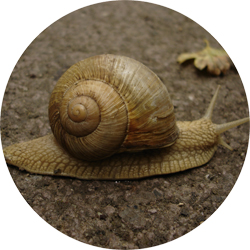Beyond diversity: how nested predator effects control ecosystem functions
by Schneider, F.D., Brose, U.
Published: 01 January 2013
In: Journal of Animal Ecology, 82:64–71
doi: 10.1111/1365-2656.12010
Abstract
- The global decline in biodiversity is especially evident in higher trophic levels as predators display higher sensitivity to environmental change than organisms from lower trophic levels. This is even more alarming given the paucity of knowledge about the role of individual predator species in sustaining ecosystem functioning.
- The effect of predator diversity on lower trophic level prey is often driven by the increasing chance of including the most influential species. Furthermore, intraguild predation can cause trophic cascades with net positive effects on basal prey. As a consequence, the effects of losing a predator species appear to be idiosyncratic and it becomes unpredictable how the community’s net effect on lower trophic levels changes when species number is declining.
- We performed a full factorial microcosm experiment with litter layer arthropods to measure the effects of predator diversity and context-dependent identity effects on a detritivore population and microbial biomass.
- We show that major parts of the observed diversity effect can be assigned to the increasing likelihood of including the most influential predator. Further, the presence of a second predator feeding on the first predator dampens this dominant effect. Including this intraguild predator on top of the first predator is more likely with increasing predator diversity as well. Thus, the overall pattern can be explained by a second identity effect, which is nested into the first.
- When losing a predator from the community, the response of the lower trophic level is highly dependent on the remaining predator species. We mechanistically explain the net effects of the predator community on lower trophic levels by nested effects of predator identities. These identity effects become predictable when taking the species’ body masses into account. This provides a new mechanistic perspective describing ecosystem functioning as a consequence of species composition and yields an understanding beyond simple effects of biodiversity.
Related publications
- Florian D. Schneider & Christian Guill (2015), Code release for Schneider et al. "Animal diversity and ecosystem functioning in dynamic food webs" , , doi: 10.5281/zenodo.58183
- Brose, U., Blanchard, J. L., Eklöf, A., Galiana, N., Hartvig, M., R. Hirt, M., Kalinkat, G., Nordström, M. C., O'Gorman, E. J., Rall, B. C., Schneider, F. D., Thébault, E. and Jacob, U. (2016), Predicting the consequences of species loss using size-structured biodiversity approaches, Biological Reviews, 92 2:684-697 doi: 10.1111/brv.12250
- Kalinkat, G., Schneider, F.D., Digel, C., Guill, C., Rall, B. C., Brose, U. (2013), Body masses, functional responses and predator–prey stability, Ecology Letters, 16 :1126–-1134 doi: 10.1111/ele.12147
- Schneider, F.D., Scheu, S. & Brose, U. (2012), Body mass constraints on feeding rates determine the consequences of predator loss, Ecology Letters, 15 :436–443 doi: 10.1111/j.1461-0248.2012.01750.x
- Schneider, F.D., Scheu, S. & Brose, U. (2014), Corrigendum to Schneider, Scheu & Brose (2012) DOI: 10.1111/j.1461-0248.2012.01750.x, Ecology Letters, 17 10:1339–1340 doi: 10.1111/ele.12333 (pdf)
- Schneider, F. D., Brose, U., Rall, B. C., Guill, C. (2016), Animal diversity and ecosystem functioning in dynamic food webs, Nature Communications, 7 :12718 doi: 10.1038/ncomms12718 (pdf)
